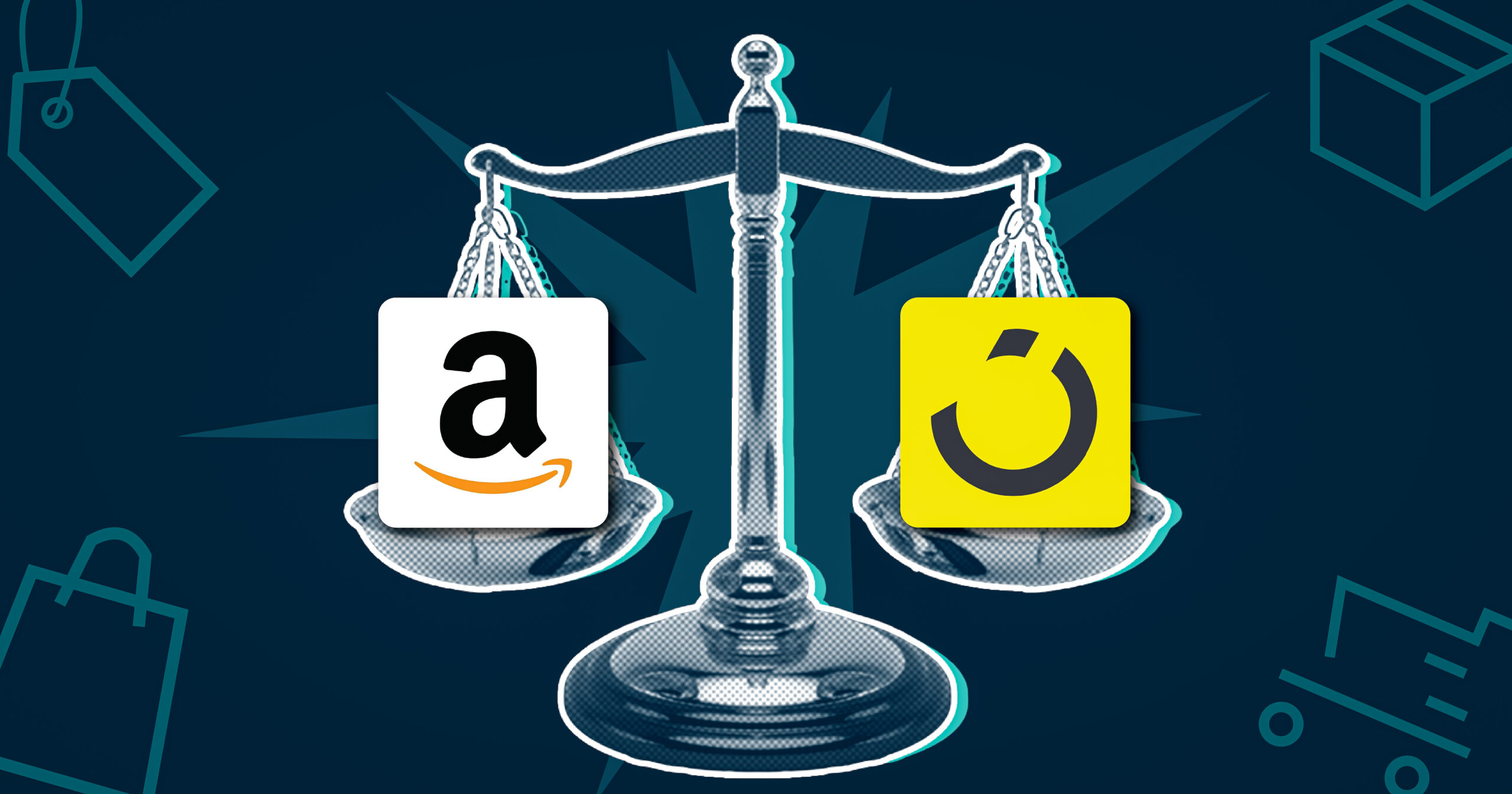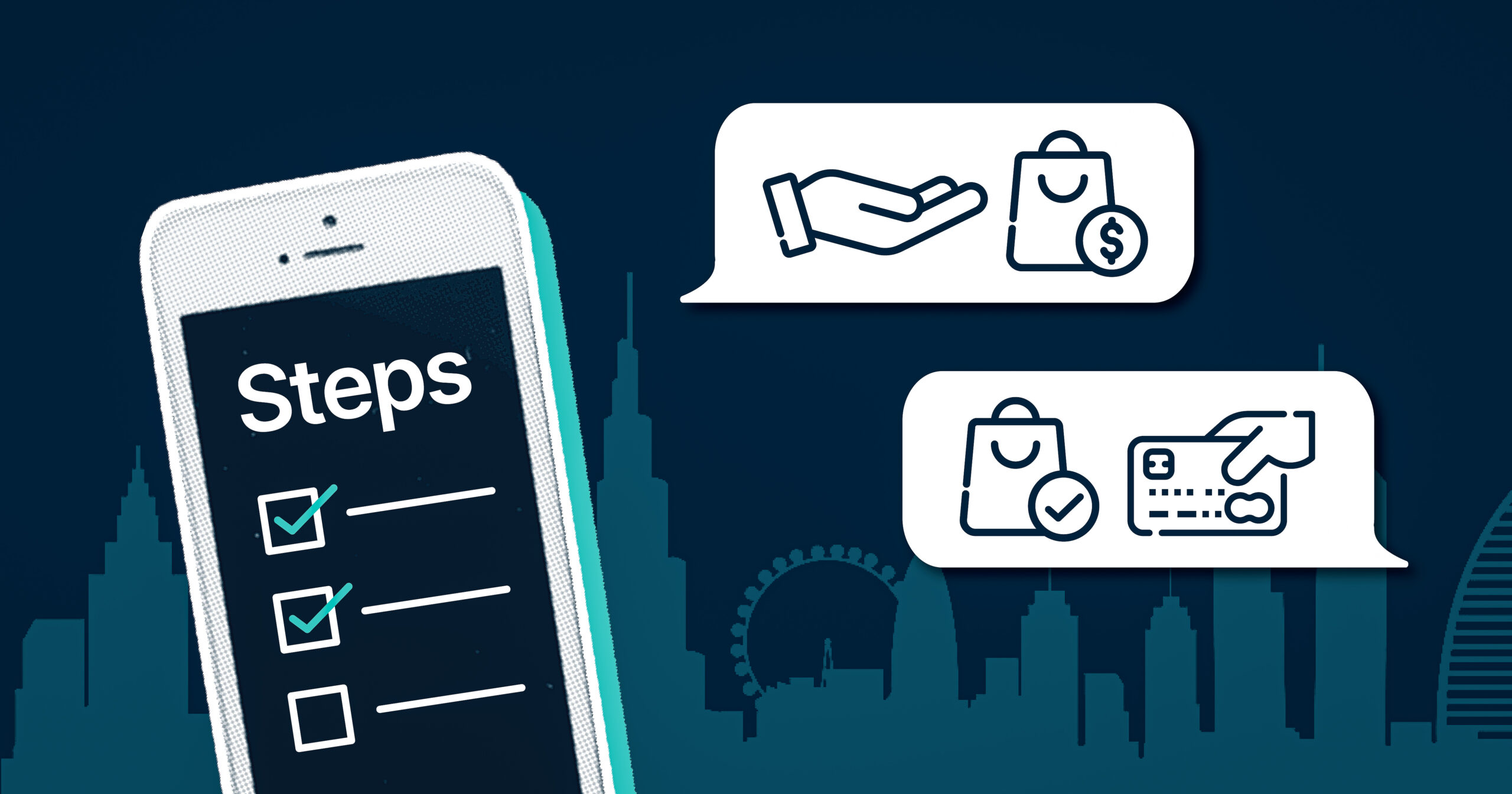Featured Articles
Blog Categories
Amazon vs. Noon: Which Marketplace is Right for Your E-commerce Business?
Wondering which e-commerce platform to choose in the UAE’s bustling market? When expanding your e-commerce business into the Middle East and North Africa (MENA) region, Amazon and Noon are two of the most prominent marketplaces to consider. With both platforms rapidly gaining traction among sellers, making the right choice is crucial for your business. Amazon vs. Noon: Choosing the Ideal Platform for Your Business In today’s business world, marketplaces are where the action is. But to really make the most of these platforms, you need more than just a quick look—you’ll want some expert advice to help you get the best results. Amazon: Breaking Down the Powerhouse Amazon is a major player thanks to its huge global reach. With millions of active users around the world, it gives your business amazing visibility and access to a broad audience. This can be a huge advantage if you're looking to grow quickly and tap into international markets. Amazon’s global reach and extensive infrastructure provide unparalleled visibility and access to a broader audience. Its robust financing options offer more flexible and extensive solutions compared to Noon’s regional focus. eFunder is a great choice for Working Capital Financing and invoice financing. It’s perfect for both Amazon and Noon sellers. With eFunder, we fetch the approved invoices online and get funding in 24 hours—fast access to the cash you need. And for working capital we check your historical data on Amazon or Noon and get 4-6 weeks of your future sales upfront which helps SME's with their cashflow. T&C apply* We offer flexible solutions, tailored to fit your needs. Plus, our competitive rates and simple requirements, focusing on your customers’ creditworthiness rather than your own, make it easier to qualify for financing. eFunder’s invoice financing has some great perks over traditional bank loans, including quicker funding, more flexible options, and a hassle-free online application process. Invest in your business's future with eFunder. Our innovative tools and expert guidance will help you maintain a strong credit profile and unlock new opportunities. Also Read: A Step-by-Step Guide for Setting Up Your Amazon Seller Account in UAE Noon: Regional Focus and Targeted Solutions On the other hand, Noon's deep-rooted presence in the MENA region positions it as a formidable competitor for businesses seeking to tap into this market. With a focus on local market dynamics, Noon offers tailored solutions, competitive pricing, fast delivery within the UAE, and specialized financing options that align with the needs of local sellers. These advantages set it apart from global competitors like Amazon, making it a strong choice for businesses targeting the MENA market. Local Focus: Noon understands regional consumer needs, offering a tailored approach for the MENA market. Competitive Pricing: Noon often provides exclusive deals and competitive pricing to attract customers. Fast and Reliable Delivery: Significant investments in logistics ensure prompt delivery across the UAE. Growing Ecosystem: Noon is expanding its services with Noon Food and Noon Daily, providing additional opportunities for sellers. Marketplace Financing: This helps bridge the gap between invoice generation and payment collection, making it easier to manage cash flow. Working Capital Marketplace: Noon’s financing options provide access to working capital, which is crucial for maintaining smooth operations and investing in growth. If you’re looking for alternatives to traditional financing, Noon’s marketplace lending and marketplace loans might be just what you need. These options are tailored to meet the unique needs of marketplace sellers, offering flexible terms and faster access to funds. Plus, Noon’s financing solutions are designed to help with specific cash flow challenges and investment needs. This way, you can get the resources you need to succeed in a competitive market. Also Read: How to Set up a Seller’s Noon Account Choosing between Amazon and Noon really comes down to your business goals and where you want to focus. eFunder is a great choice for Working Capital Financing and invoice financing. It’s perfect for both Amazon and Noon sellers. With eFunder, we fetch the approved invoices online and get funding in 24 hours—fast access to the cash you need. And for working capital we check your historical data on Amazon or Noon and get 4-6 weeks of your future sales upfront which helps SME's with their cash flow. T&C apply* We offer flexible solutions, tailored to fit your needs. Plus, our competitive rates and simple requirements, focusing on your customers’ creditworthiness rather than your own, make it easier to qualify for financing. eFunder’s invoice financing has some great perks over traditional bank loans, including quicker funding, more flexible options, and a hassle-free online application process. Invest in your business's future with eFunder. Our innovative tools and expert guidance will help you maintain a strong credit profile and unlock new opportunities.Also Read: How eFunder.ai is Empowering Marketplace Sellers To Take Their Business To The Next Level
Top Growth Industries for UAE e-commerce SMEs: Conquer the Digital Marketplace
The UAE's e-commerce scene is booming, driven by a tech-savvy population and a growing appetite for online shopping. This presents a golden opportunity for small and medium-sized enterprises (SMEs) to carve their niche in the digital marketplace. But with so many categories to choose from, which industries offer the most fertile ground for e-commerce success? Here, we explore the top growth industries for UAE e-commerce SMEs: 1. Fashion & Beauty: UAE residents are known for their discerning taste and love for all things stylish. This translates to a thriving online fashion and beauty market. Whether you offer trendy apparel, luxurious skincare products, or high-end fragrances, there's a dedicated customer base waiting to be discovered. 2. Electronics & Appliances: Cutting-edge technology is a major draw for UAE consumers. Capitalize on this trend by offering the latest gadgets, smartphones, home appliances, and other electronic devices. Partnering with top brands or offering competitive pricing can set you apart in this dynamic market. 3. Home & Living: With a growing focus on creating stylish and comfortable living spaces, the demand for homeware and décor items is surging. From furniture and bedding to kitchenware and gardening supplies, cater to the desire for a well-curated home environment. 4. Health & Wellness Products: The UAE prioritizes well-being, leading to a rising demand for health and wellness products. Whether it's organic food options, fitness supplements, or natural beauty products, tap into this market segment dedicated to holistic living. Conquering the Digital Marketplace: Finding your niche within these top growth industries is just the first step. To truly thrive in the UAE's e-commerce landscape, consider these crucial aspects: Choosing the Best E-commerce Marketplace: Explore popular platforms like Amazon, Noon, and Sharaf DG, each with its unique advantages and customer base. Building a Strong Online Presence: Create a user-friendly website or mobile app with secure payment gateways and efficient logistics. Optimizing Marketing Strategies: Utilize social media marketing, search engine optimization (SEO), and targeted advertising to reach your ideal customers. Providing Exceptional Customer Service: Build trust and loyalty by offering prompt responses to inquiries, efficient delivery services, and hassle-free returns. Fueling Your E-commerce Journey with eFunder: Launching and scaling an e-commerce business requires a robust financial foundation. eFunder, your one-stop shop for financing solutions, can be your partner in success: Business Funding Solutions: Access a variety of funding options like small business loans, investment opportunities, or working capital financing tailored to your specific needs. Company Financing & Investment for Business: Connect with investors and explore funding options best suited for your growth goals. Working Capital Lenders: Secure the working capital needed to manage inventory, marketing campaigns, and day-to-day operations. Don't just survive - thrive! With a strategic approach, a focus on the right industries, and the financial support of eFunder, your UAE e-commerce SME can soar in the competitive digital marketplace. Now that you've explored these top growth areas, the question remains: which industry speaks to your entrepreneurial spirit? Take the first step today and unlock the immense potential of the UAE's e-commerce landscape!
A Step-by-Step Guide for Setting Up Your Amazon Seller Account in UAE
The United Arab Emirates is a digital goldmine for aspiring entrepreneurs. With its ever-growing online population and thriving e-commerce scene, setting up shop on the right platform can propel your business to new heights. Look no further than Amazon UAE, a marketplace synonymous with trust, convenience, and a massive customer base. Here's a step-by-step guide to becoming a successful Amazon seller in the UAE, with eFunder integrated as your financial partner throughout the journey. 1. Choose Your Seller Plan & Secure Funding (eFunder): Amazon offers two main options: Individual Plan: Ideal for low-volume sellers with occasional sales. Professional Plan: Perfect for growing businesses with higher sales volume and access to advanced features like bulk product uploads and detailed sales reports. Analyze your projected sales and e-commerce goals to select the plan that best suits your needs. eFunder can step in here! They can help you create realistic financial projections and explore funding options, like small business loans or even crowdfunding, to ensure you have the capital needed to launch and scale your business on Amazon UAE. 2. Register Your Seller Account & Navigate Business Formation (eFunder): Head to Amazon Seller Central UAE and click "Sell on Amazon." Enter your business or individual details, including email address, phone number, and business name (if applicable). Craft a secure password for your account. Navigating the complexities of business setup can be time-consuming and divert your focus from core business activities. Consider enlisting the support of business formation specialists to handle the paperwork and ensure legal compliance, allowing you to concentrate on launching your business. 3. Verify Your Identity: To ensure a secure and legitimate marketplace environment, Amazon requires identity verification. Submit the following documents: For Individuals: Emirates ID and a proof of address like a bank statement or utility bill. For Businesses: Trade License, Power of Attorney (if applicable), and Emirates ID of the business owner. 4. Select Your Product Category & Optimize Listings (eFunder): Amazon boasts a vast array of categories. Carefully choose the one that best aligns with your product type. Some categories might require additional approval from Amazon, so research these requirements in advance. Now comes the critical part: creating compelling product listings. Effective product listing creation takes time and expertise.Additionally, eFunder can help with keyword research to ensure your products appear in relevant search results for potential customers. 5. Choose Your Fulfillment Strategy & Manage Finances (eFunder): Decide on how you'll handle order fulfillment for your products. Two primary options exist: Fulfillment by Merchant (FBM): You manage storage, packaging, and shipping yourself. Fulfillment by Amazon (FBA): Amazon stores, packs, and ships your products for a fee, offering faster delivery options and potentially increased visibility. eFunder can help you analyze your business model and financial projections to determine which fulfillment method best suits your budget and growth goals. Additionally, eFunder can connect you with funding options like inventory financing to facilitate seamless FBA operations. 6. Manage Your Business Growth & Secure Ongoing Funding (eFunder): Congratulations! You're officially selling on Amazon UAE. Now comes the exciting part: growing your business! Here are some key areas to focus on: Customer Service: Promptly address customer inquiries and maintain high satisfaction ratings. Inventory Management: Ensure adequate stock levels and avoid stockouts. Marketing and Promotions: Utilize Amazon's advertising tools to increase product visibility and sales. Managing and scaling an e-commerce business requires ongoing financial planning. eFunder's financial tools and expert guidance can be invaluable assets. They can help you create accurate financial projections, secure funding for growth initiatives like marketing campaigns or expanding product lines, and ensure your business remains profitable throughout its journey. By following these steps and leveraging the support of eFunder.ai, you can unlock the immense potential of Amazon UAE and build a thriving online business in the heart of the digital desert. Remember, success hinges on a combination of strategic planning, meticulous execution, and a reliable financial partner by your side. Take the first step today and unleash your e-commerce potential!
How to Get Funding For Restaurant Startup: Resource Guide for UAE Entrepreneurs
The allure of Dubai's vibrant culinary scene beckons aspiring restaurateurs, but transforming your passion into a bustling eatery requires a crucial first step: securing funding. Fear not, fellow foodpreneurs! Here's a comprehensive guide to navigate the exciting, yet sometimes confusing, world of restaurant investment, with a special focus on how eFunder can be your culinary partner throughout the journey. Funding Avenues: Choosing the Right Plate for Your Culinary Journey Small Business Loans: Traditional banks often prioritize established businesses, making it challenging for startups and SMEs to secure loans. eFunder steps in to fill this gap. We specialize in connecting businesses with lenders who understand the unique financial needs of the restaurant industry. This means more flexible loan options tailored to your startup journey. Bootstrapping: This self-funded approach allows you to get creative. Leverage personal savings, equipment financing, or consider a crowd-funding campaign. Remember, bootstrapping requires meticulous planning and cost-conscious decisions. eFunder's financial tools can help you optimize your operations to minimize expenses during this stage. Angel Investors: These culinary connoisseurs with deep pockets often invest in promising concepts in exchange for equity. Craft a compelling pitch showcasing your unique concept, clear path to profitability, and a team with a proven track record. eFunder can connect you with potential angel investors within their network and guide you in refining your pitch. Venture Capitalists (VCs): If you're aiming for explosive growth, VCs may be your answer. These firms invest in high-potential businesses, but be prepared for a rigorous vetting process. Focus on your disruptive potential and long-term vision. Crowdfunding: Platforms like Kickstarter can help you raise capital from a large pool of individuals. Offer enticing rewards or equity in exchange for their support. Crowdfunding can be a great way to validate your concept and build a loyal customer base. Building a Strong Foundation: More Than Just a Delicious Menu Securing funding is just the first course in your culinary journey. Investors are hungry for more than a delectable menu. Here's what they crave: Solid Business Plan: Craft a comprehensive plan outlining your restaurant concept, target market, financial projections, and marketing strategies. Consider consulting with a business plan expert to ensure it's investor-ready. eFunder can provide guidance on building a strong financial plan and connect you with business plan consultants. Passionate Team: Showcase a team with relevant industry experience and a burning passion for your restaurant's vision. Surround yourself with individuals who share your culinary enthusiasm and dedication to success. Unique Selling Proposition (USP): What sets your restaurant apart? Highlight your innovative concept, exceptional customer service approach, or unique culinary focus. Remember, standing out from the crowd is key. The UAE Advantage: A Culinary Incubator The UAE offers a fertile ground for burgeoning restaurateurs. Government initiatives and free zone authorities often provide attractive financing options for high-growth businesses. Explore funding opportunities offered by entities like Dubai SME or Sharjah Entrepreneurship Center. These resources, along with eFunder's expertise, can help you turn your culinary dream into a thriving reality. Embrace the Culinary Adventure! By aligning the right funding option for restaurants business with a strong business foundation, and partnering with eFunder as your culinary partner, you can turn your restaurant dream into a bustling eatery. Research your options, refine your pitch, and embark on your delicious journey! Remember, a well-crafted business plan, a passionate team, and a compelling value proposition are the essential ingredients for securing funding and achieving restaurant success in the UAE. With eFunder by your side, you'll have the financial tools, expert guidance, and network connections to navigate the financial aspects of your restaurant journey and turn your culinary vision into a delicious reality.
How to Start An Ecommerce Marketplace in Dubai (2024 Guide)
Dubai's meteoric rise as a global trade hub extends to the digital realm, offering a golden opportunity for e-commerce entrepreneurs. Its strategic location, world-class infrastructure, and supportive government policies create a fertile ground for online business growth.To capitalize on this potential, a well-structured approach is essential. This comprehensive guide outlines key steps to navigate the dynamic market landscape and build a thriving e-commerce empire in Dubai. Unearthing Your Niche and Building a Strong Foundation Market Research and Niche Identification: Conduct thorough research to understand consumer behavior, emerging trends, and the competitive landscape. Identify a specific niche where your products or services can excel. Analyze customer needs and preferences to tailor your offerings for maximum impact. Business Structure and Licensing: Choose the most suitable business structure based on your goals: operate within Dubai for wider market access, or consider a free zone to benefit from tax breaks and streamlined setup processes. Navigate the licensing process to ensure legal compliance. Crafting Your Online Presence and Reaching Your Audience Platform Development: Create a user-friendly online platform that showcases your products effectively. Choose a reliable e-commerce platform like Amazon or Noon or develop a custom solution tailored to your specific needs. Design a visually appealing and user-friendly website optimized for search engines (SEO) to maximize visibility. Strategic Marketing: Develop a comprehensive marketing strategy to reach your target audience. Build a strong brand identity that resonates with your customers. Utilize social media marketing, email campaigns, and compelling content generation to drive traffic to your online store. Offer attractive incentives and loyalty programs to foster repeat business. Financial Management, Logistics, and Building Growth Financial Planning and Funding: A strong financial foundation is crucial for e-commerce success. Here's how to secure the funding you need: Create a detailed business plan: Outline your financial goals, projections, and funding requirements. Explore funding options: Consider loans, investments, or self-funding (bootstrapping). eFunder provides funding choices to SMEs to assist them in obtaining quick capital for the business to grow. Utilize eFunder: You can access the eFunder dashboard, connect with industry investors, and receive funding approval within 24 hours.T&C Apply* Monitor and Analyze Financial Performance: Track your income and expenses closely using eFunder's tools to maintain financial stability. Regularly review your financial health to make informed decisions about your business's direction. By leveraging eFunder.ai's resources, you can optimize your financial strategy and secure the necessary funds to grow your Dubai e-commerce business. Logistics and Fulfillment: Establish efficient order fulfillment and shipping processes. Partner with reliable logistics providers to ensure timely deliveries, reduce costs, and meet customer expectations. Implement inventory management systems to optimize stock levels and avoid stockouts. Customer Experience and Growth: Prioritize exceptional customer service to build loyalty and positive word-of-mouth. Implement customer feedback mechanisms to continuously improve your products, services, and overall customer experience. Utilize data analytics to understand customer behavior and preferences, allowing you to tailor your offerings and target new customer segments for sustainable growth. Embrace the Dubai Advantage Dubai's dynamic business environment offers a wealth of resources to support your e-commerce venture. Consider leveraging government initiatives and free zone authorities that provide attractive financing options for high-growth businesses. Embrace the challenges and opportunities that this vibrant city offers—with careful planning, continuous innovation, and a strong customer focus, you can build a lasting e-commerce empire in Dubai. By meticulously executing each step and adapting your approach to the ever-evolving market, you can transform your e-commerce vision from dream to reality. Remember, success hinges on a deep understanding of your target market, a customer-centric approach, and a willingness to adapt as the landscape changes.
The Numbers Game: Demystifying Risk Analysis for eFunder Financing
For many business owners, securing financing can feel like a confusing numbers game. Loan applications often involve intricate risk assessments, leaving you wondering: "Will my business qualify?" At eFunder, we understand your concerns. This blog post aims to demystify eFunder's risk analysis process for financing, giving you a clear picture of what we consider and how you can strengthen your application. Understanding eFunder's Risk Analysis: Our risk analysis goes beyond a simple credit score. We take a holistic approach, evaluating several factors to determine your business's financial health and ability to repay a loan. Here's a breakdown of key aspects we consider: Financial health: This includes your business's revenue, profitability, and debt-to-equity ratio. Strong financials demonstrate a stable foundation for managing a loan. Industry trends: We consider the overall health and growth potential of your industry. A business operating in a thriving sector with positive trends bodes well for future success. Repayment history: If you've had previous loans or financing arrangements, your repayment history plays a crucial role. A consistent track record of on-time payments builds trust and demonstrates your commitment to financial responsibility. Also Read - What are the requirements to get funding from eFunder.ai? Tips for Strengthening Your Business Profile: By understanding these factors, you can take proactive steps to solidify your business profile and improve your chances of securing financing with favorable terms: Maintain meticulous financial records: Accurate and up-to-date financial statements are vital. They provide a clear picture of your business's financial health for lenders. Demonstrate profitability: A track record of consistent profitability assures lenders you have the resources to manage loan repayments. Develop a solid business plan: A well-defined business plan outlines your future goals and strategies. It demonstrates your vision and preparedness for growth. Build strong credit history: Establishing a good credit history for your business through responsible borrowing and timely payments enhances your credibility. Beyond the Numbers: While numbers play a significant role, eFunder also values your business story. We understand the passion and dedication behind your venture. Feel free to share your unique selling points, market opportunities, and future plans during the application process. This comprehensive approach allows us to assess your business potential and provide the best possible financing solutions. Remember, eFunder is committed to supporting your business growth. By understanding our risk analysis process and taking steps to strengthen your business profile, you'll be well-positioned to navigate the "numbers game" and secure the financing you need to succeed.
The Future of Digital Financing in the UAE: Trends and Opportunities
The UAE has emerged as a regional hub for innovation and entrepreneurship. As businesses flourish, the demand for flexible and accessible financing solutions grows alongside it. This is where digital financing steps in, transforming the financial landscape for businesses of all sizes. What is Digital Financing? Digital financing utilizes online platforms and technology to streamline the financing process. Invoice financing, for example, allows businesses to access immediate funds based on their outstanding invoices, improving cash flow management and overcoming cash flow gaps. Also Read - How Digital Financing Solutions Are Shaping Today’s Economy Looking Ahead: The Evolving Landscape of Digital Financing The future of digital financing in the UAE is brimming with exciting possibilities. Here are some key trends to watch: AI-powered Credit Assessments: Artificial intelligence (AI) will play an increasingly crucial role in credit assessments. AI algorithms can analyze vast amounts of data to make faster and more accurate decisions, benefitting businesses seeking financing. Blockchain-based Solutions: Blockchain technology offers enhanced security and transparency in financial transactions. Digital financing platforms that leverage blockchain can create a more secure and efficient ecosystem for businesses and lenders. Also Read - Traditional Financing vs Digital Financing – The Current Global Perspective eFunder: Adapting and Leading the Way At eFunder, we are committed to staying ahead of the curve. We actively explore and integrate emerging technologies like AI and blockchain to continuously improve our digital financing platform. This ensures we provide businesses with the most efficient and secure financing solutions available. Also Read - Scaling Up with Confidence: How eFunder Supports Growth-Stage Businesses Benefits of Advanced Digital Financing: These advancements in digital financing offer a multitude of advantages for businesses: Faster Loan Approvals: AI-powered assessments can significantly reduce waiting times for loan approvals, allowing businesses to access funds quicker. Simplified Processes: Digital platforms streamline the entire financing process, making it easier for businesses to apply for and manage their finances. Increased Transparency: Blockchain technology fosters greater transparency in transactions, building trust between businesses and lenders. Improved Cash Flow Management: Digital financing solutions like invoice financing provide businesses with the flexibility to manage their cash flow more effectively. The Future is Digital The future of financing in the UAE is undoubtedly digital. With continuous advancements and eFunder's commitment to innovation, businesses can look forward to a more accessible, efficient, and secure financial landscape that empowers them to achieve their goals.
Scaling Up with Confidence: How eFunder Supports Growth-Stage Businesses
The transition from a successful startup to a thriving established business is an exciting yet challenging phase. Growth-stage businesses often face unique hurdles as they scale operations. Inventory management, cash flow management, and marketing expansion are just a few examples. This is where eFunder steps in, providing the digital financing solutions you need to scale up with confidence. Challenges Faced by Growing Businesses: Inventory Management: Meeting increased demand often requires larger inventory purchases. However, managing cash flow for inventory management systems and bulk stock can be tricky. Cash Flow Management: Rapid growth can strain your cash flow. Managing cash flow effectively becomes crucial to meet operational expenses and seize new opportunities. Marketing Expansion: Reaching a wider audience often involves digital marketing campaigns and strategic investments. But these require upfront costs that can disrupt cash flow. eFunder's Solutions for Scaling Up: eFunder offers a variety of financing solutions specifically designed to address the needs of growth-stage businesses: Vendor Advance: This solution helps you secure funding to pay for inventory upfront, allowing you to take advantage of bulk purchase discounts and meet customer demand without straining your cash flow. Learn More - https://efunder.ai/vendor-advance/ Working Capital Advance: This flexible solution provides immediate access to a portion of your future receivables, giving you the cash flow management boost needed to cover operational expenses, invest in marketing initiatives, and fuel your growth strategy. Learn more -https://efunder.ai/working-capital/ Also Read - Cash Flow Freedom: How eFunder Empowers Businesses to Take Control of their Finances Investing in Your Growth Journey By partnering with eFunder, you gain access to the financial tools and resources needed to overcome the hurdles of scaling up. Our digital financing platform empowers you to make strategic investments in inventory, marketing, and other key areas, propelling your business towards its full potential. Focus on the Future With eFunder by your side, you can navigate the growth stage with confidence, focusing on achieving your long-term vision and building a successful future for your business. Also Read - The Future of Digital Financing in the UAE: Trends and Opportunities
Cash Flow Freedom: How eFunder Empowers Businesses to Take Control of their Finances
Imagine a world where you're not constantly chasing invoices, worrying about late payments, or scrambling to cover unexpected expenses. This, my friends, is the dream of cash flow freedom. It's a state where businesses have a clear picture of their cash flow, the lifeblood of any organization. With cash flow freedom, businesses can invest in growth, navigate challenges, and ultimately achieve financial stability. What is Cash Flow Freedom? Cash flow freedom is the ability to manage your cash flow effectively, ensuring a steady stream of incoming cash to cover ongoing expenses and fuel future endeavors. It's more than just having enough money; it's about cash flow management that empowers you to make informed financial decisions, build a buffer against unforeseen circumstances, and ultimately, unlock your business's full potential. Also Read - Unlocking Cashflows with eFunder: A Comprehensive Guide to Invoice Financing for SMEs Common Obstacles to Business Financial Freedom The road to cash flow freedom isn't always smooth. Many businesses face common challenges that disrupt their financial equilibrium: Late Payments: Customers who pay late can leave a significant gap in your cash flow. This can be especially problematic for businesses with tight margins. Seasonality : Some industries experience periods of high and low activity. During slow times, cash flow can dwindle, hindering your ability to meet obligations. Unexpected Expenses : Equipment breakdowns, repairs, or emergencies can throw your budget off track, impacting your cash flow. Taking Charge: The Importance of Cash Flow Management Effective cash flow management is the key to overcoming these obstacles and achieving cash flow freedom. Here's how it empowers your business: Improved Decision-Making : Having a clear understanding of your cash flow allows you to make informed financial decisions, like managing operating cash flow effectively and strategically allocating resources. Enhanced Stability: Cash flow freedom acts as a financial safety net, protecting your business from unexpected disruptions and ensuring you can meet your financial commitments. Growth Opportunities: With a steady stream of available cash, you can invest in new equipment, explore new markets, and seize opportunities that drive business growth. Empowering Businesses: eFunder's Role in Cash Flow Management At eFunder, we understand the critical role cash flow management plays in business success. We provide a comprehensive range of solutions and strategies tailored to empower Marketplace Seller, Vendor, Restaurant Business, Pharmacy or Clinic. Our tailored services help you take control of your finances and achieve the freedom and flexibility of robust cash flow management. Also Read - How to Get Quick Access To Steady Cash Flow With eFunder.ai Strategic Solutions: How eFunder Helps Businesses Manage Cash Flow eFunder provides innovative financial tools and services to help you manage your cash flow effectively: Invoice Financing : Unlock the value tied up in your outstanding invoices and receive immediate cash, boosting your cash flow for operational needs. Accounts Receivable Financing : Gain access to a line of credit based on your outstanding invoices, improving your cash flow flexibility and ability to manage ongoing expenses. Cash Flow Forecasting Assistance : Our team can help you develop accurate cash flow forecasts, allowing you to anticipate future needs and make informed financial decisions. Also Read: What are the requirements to get funding from eFunder.ai? Embracing Financial Freedom: Partnering with eFunder for Success Cash flow freedom is not a luxury; it's a necessity for business success. By partnering with eFunder, you gain access to the tools, cash flow funding options, and expert guidance you need to take control of your finances and achieve your business goals.Explore eFunder's Cash Flow Solutions today and take the first step towards cash flow freedom and financial empowerment for your business
Helping Small and Medium Businesses Unlock Growth
Experience financial freedom through our unrivaled cash flow funding solutions.










